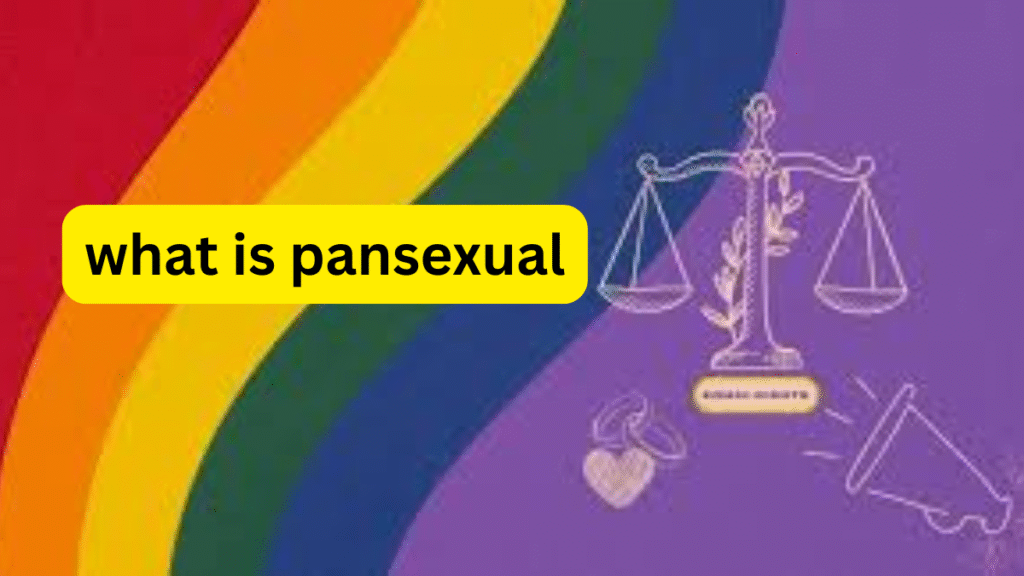What is Pansexual : The question are Pansexual celebrities,Pansexual vs omnisexual,Am I pansexual,Pansexual vs demisexual,Is pansexual a gender,What is a pansexual woman,Pansexual example,Pansexual people, and goes on and Lets see in full detail in the article .
What is Pansexual? Understanding Attraction Beyond Gender
Pansexual describes a person who can experience romantic, emotional, or sexual attraction to people of any gender identity. Often summarized by the phrase “hearts, not parts,” pansexuality emphasizes that attraction is focused on the person themselves, regardless of whether they are male, female, transgender, non-binary, or any other gender. This guide will break down what it means to be pansexual, clarify common misconceptions, and provide a clear understanding for anyone exploring this identity.
Defining Pansexuality: The Core Concept
At its heart, pansexuality is about the potential for attraction to all people. For pansexual people, gender is not a determining or limiting factor in who they find attractive. This distinguishes it from orientations like heterosexuality or homosexuality, which are defined by the gender(s) attracted to.
A Practical Pansexual Example
To make this concrete, consider this pansexual example: A pansexual person might find themselves equally likely to develop a crush on a cisgender man, a transgender woman, a non-binary individual, or anyone else. The common thread is a connection with the individual’s personality, character, and spirit, rather than their gender identity or biological sex.
Clarifying Common Confusions: Pansexual Vs. Other Identities
Pansexuality is often compared to other multisexual orientations. Understanding the nuances can help clarify its unique meaning.
Pansexual vs Omnisexual
The difference between pansexual vs omnisexual is subtle but important. Both identities involve attraction to all genders. However:
- Pansexual: Often described as “gender-blind,” meaning a person’s gender does not play a role in the attraction.
- Omnisexual: A person who is attracted to all genders, but for whom gender may be a notable and appreciated factor in the attraction.
Think of it as the difference between not noticing gender versus noticing and appreciating all genders.
Pansexual vs Demisexual
This comparison highlights a different aspect of attraction. The key distinction in pansexual vs demisexual is:
- Pansexual: Defined by the gender (or lack thereof) of who one is attracted to (all genders).
- Demisexual: Defined by the conditions under which attraction forms (only after a deep emotional bond is formed).
A person can be both pansexual and demisexual—meaning they can be attracted to people of any gender, but only after forming a strong emotional connection.
Exploring Your Identity: A Step-by-Step Guide
If you are questioning your own attractions, here is a reflective process to guide you.
- Reflect on Your Patterns of Attraction: Look back at your crushes and relationships. Have you found yourself attracted to people across the gender spectrum? Did their gender feel irrelevant to your attraction?
- Consider the “Hearts, Not Parts” Idea: Does the concept of being drawn to someone’s personality, humor, or character, regardless of their gender identity, resonate with you?
- Explore the Label: Try using the term “pansexual” to yourself or with a trusted friend. Does it feel like a comfortable and accurate fit for your experiences?
- Connect with the Community: Read stories and listen to the experiences of other pansexual people. Does their description of attraction mirror your own?
- Be Patient: Understanding your sexuality is a journey. It’s okay if it takes time, or if your understanding of your identity evolves.
Debunking Myths and Answering Key Questions
There are several common misconceptions about pansexuality that are important to address.
Is Pansexual a Gender?
No. Is pansexual a gender? Absolutely not. Pansexuality is a sexual orientation, describing attraction. Gender identity is about who you are. A pansexual woman, for instance, is a person whose gender identity is female and whose sexual orientation is pansexual.
Visibility and Representation
Increased visibility helps normalize the identity. While personal lives are private, some pansexual celebrities have spoken publicly, including singer Brendon Urie, actress and advocate Jazz Jennings, and singer Janelle Monáe. Their openness helps others feel less alone.
Frequently Asked Questions (FAQ)
Q1: How is pansexuality different from bisexuality?
A: There is significant overlap, and some people use the terms interchangeably. Broadly, bisexuality is attraction to more than one gender, while pansexuality is attraction regardless of gender. The best practice is to use the label an individual prefers.
Q2: Are pansexual people attracted to everyone?
A: No. This is a common myth. Pansexual people have preferences based on personality, style, values, and other factors—just like anyone else. Gender simply isn’t one of the limiting factors.
Q3: Is pansexuality a new trend?
A: No. While the term has gained popularity recently, the experience of attraction beyond gender has always existed. The label provides a modern, precise way for people to describe their feelings.
Q4: How can I be supportive of a pansexual friend or family member?
A: The best support is to respect their identity, use the language they use for themselves, and stand up against biphobic and panphobic comments. Educating yourself, as you are doing now, is a wonderful first step.
Continue Your Journey of Understanding
Whether you are exploring your own identity or seeking to be a better ally, understanding pansexuality is a step toward a more inclusive world. We encourage you to continue learning, ask respectful questions, and listen to the lived experiences of pansexual people.
